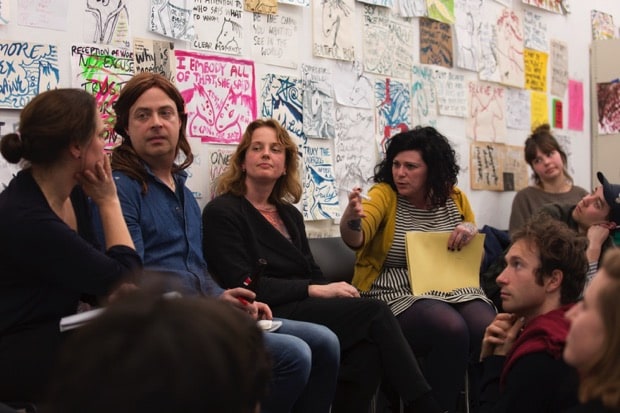Honouring Sands’s Horsepower
An Introduction to Sands Murray-Wassink’s ‘Gift Science Archive’
By Megan Hoetger
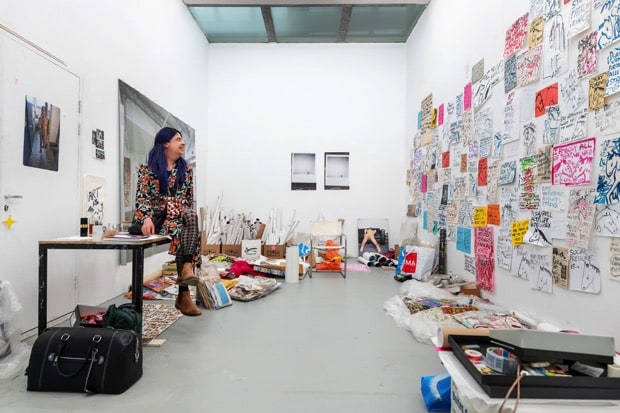
Welcome to giftsciencearchive.net, an experimental archive of the work of Dutch-American artist Sands Murray-Wassink assembled through storytelling and reproductive labour methods developed with Amalia Calderón, Radna Rumping and myself. Expanding the boundaries of performance documentation, the database also documents the eponymous nearly three-year durational performance of archiving an art/life practice—itself an expanding of the boundaries of performance. To honour Sands’s horsepower honours the exploded, the overspill, the ‘simply too much’, his unbreakable commitment to relating in and to the world. Giftsciencearchive.net echoes this commitment, giving visitors multiple ways to relate in and to the artist’s archive.
What Is Gift Science Archive?
provides an overview of the Gift Science Archive project, as well as a brief user’s manual for navigating the giftsciencearchive.net database
Accumulation, Thickness and ‘Studio Objects’
dives into the structural logics at play in Sands Murray-Wassink’s art/life
Domesticity and the Reproductive Labour of Archiving
thinks through the relational networks constitutive of Gift Science Archive and the manifold sites of ‘work’ and ‘care’ therein
What Is Gift Science Archive?
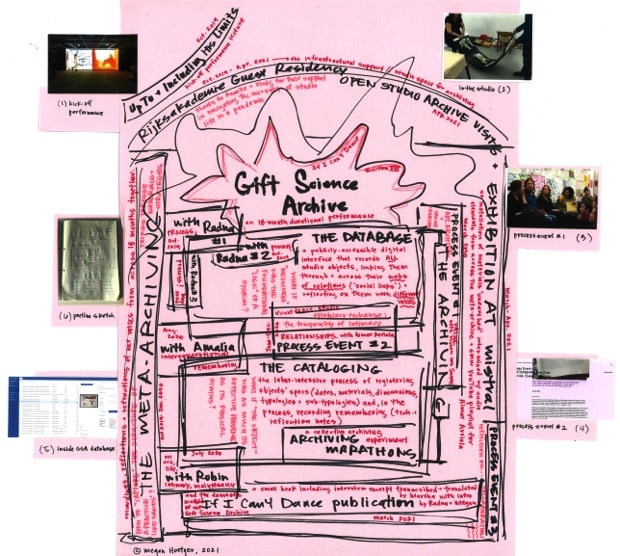
Gift Science Archive is a ‘monumental’ collaborative performance initiated by Sands Murray-Wassink that takes up feminist methodologies as the foundation for building an archive of materials across the artist’s nearly thirty-year art/life practice. The project was commissioned by If I Can’t Dance’s director Frédérique Bergholtz as part of the Edition VIII – Ritual and Display programme (2019 – 21) and developed in conversation with me as a curator with If I Can’t Dance. The title is an homage to artist Carolee Schneemann’s 1965 Gift Science, an assemblage work that brings together objects gifted to her by other artists. The opening public moment of Gift Science Archive was in October 2019 in the frame of Edition VIII’s Introduction Programme in Amsterdam and closes March 2022 in the frame of an exhibition at Auto Italia, London. In concert with the ongoing archiving process unfolding in the studio at the Rijksakademie van beeldende kunsten where Murray-Wassink was a guest resident from October 2019 to July 2021, a range of activities and events took place:
- · Up To and Including His Limits
- · Process Event #1: VALUE. What is trash? What is trashy but valuable?
- · Process Event #2: RELATIONSHIPS. Feminist Legacies, Queer Intimacies
- · In Good Company (Horsepower): Materials from the Gift Science Archive, 1993 – present
- · Without You I’m Nothing (Blue)
- · Backstage with Gift Science Archive
- · Process Event #3: COLLABORATION. How to work together?
- · I am not American (I love Adrian, I miss Carolee, I follow Hannah)
But Gift Science Archive is also much more than a series of public-facing activities and events. It is also:
A Useable Archive Database
Gift Science Archive is the database stored on giftsciencearchive.net, which archives relations and nearly 2400 ‘studio objects’, emphasising the web-like network that emerges through storytelling and the multiplicity of ways in which stories can be entered. On the home page sixteen keywords, which are portals allowing you to jump elsewhere or go deeper, are each mapped by a ‘constellation poem’ that threads together stories through Social Links (Adrian Piper, Carolee Schneemann, Hannah Wilke), Typologies (Unbuilt Roads, Performalist Self-Portraiture, (thought) Drawings + (philosophical) Sketches, Distributed Notes) and Concepts (Belonging, Discomfort, Domesticity, Dream, Is this good for anus?, Labour, Resilience, Robin, Sharing, Unbuilt Roads). These different people, forms and ideas are coordinates that map out and direct Sands’s practice. The interventions in the Typologies and the addition of Social Links depart from database conventions as does the Reflection Notes field, described in more detail below:
1) Typologies: as noted above, while incorporating familiar categories like sculpture or photography, the Gift Science Archive database has also been built to leave space open for inventing other typologies and sub-typologies that more specifically map Sands’s making and thinking. Softening the rigidness of classification systems introduces the possibility to understand ‘systematic’ through the logics in Sands’s art/life practice.
2) Social Links: this new search filter offers a view of the catalogue of ‘studio objects’ by way of interrelationships. You can, for instance, search for Carolee Schneemann [02392-2000/2021-PO-IstoryWillVindicateUs] and view across the twenty-five years of her influence, friendship or image in Sands’s practice. Social links also include Marjorie Murray [00061-1993/1995-C-SignatureCollage-040], Sands’s mother and Paul Laufer [00033-1993/1995-C-SignatureCollage-012], one of the artist’s first ‘adult’ friends met at the Rietveld in 1994. Each link is identified through relationships that change over time—from collaborator to frenemy, or influence to negative irritation—revealing the objects as talismans that open onto or hold the thoughts and feelings that are Sands’s core artistic materials.

3) Field for Reflection Notes: Developed in response to a question during Process Event #1. VALUE [01485-2020-DoP-ProcessEvent#1VALUE05] from art historian Vivian van Saaze—who joined us in a conversation on the archive and value production—on how we would document our collaborative and polyphonic archiving. Each identified by writer initials, in this field are Sands’s re-counting of memories [00626-2013-DoP-MonumentToDepression-03]; snippets of conversations [00353-2000-PsW2000-StylisticInnovation] among the many in the archiving process; process diary notes [01265-2019-MaPi-FirstMeeting-005] from Radna on meta-archive materials; and poetic responses [00428-2000-PsW2000-WarInsideTheSea] to Sands’s work and words by Amalia in her artistic research process.
A Collective of People
Gift Science Archive is also a collective of people and their positions, including the core archivers: Sands, the artist; Radna, the meta-archivist and exhibition maker; Amalia, the artistic researcher and archivist; and myself, the curator, archivist, archive manager, exhibition maker and dramaturge—and a range of other people along the way (which can be found in the Collaborators tab). In ‘Domesticity and the reproductive labour of archiving’ I closely reflect on the archivers and the relational structures that emerged between us. For now, I turn to the words of Frédérique Bergholtz, reflecting on her invitation to Sands in the Gift Science Archive’s contribution to the Rijksakademie 150-year anniversary publication [01477-2020-DN-WhyIAmArchiving] (2021). In her text, Frédérique describes three key moments of encounter with Sands’ work across the 25 years that they have known each other and worked together, which eventually led her to this March 2019 commission, of which she wrote: “I try to acknowledge my web of relations. In this gesture, I echo Sands’s consistent designation of ‘relations’ as one of his key materials, for it his persistence—and fearlessness—that has encouraged me to do so. Timing is all. Community is all.” Community is all is foundational to the Gift Science Archive as collective and proposition to which all of us involved, including If I Can’t Dance are committed.
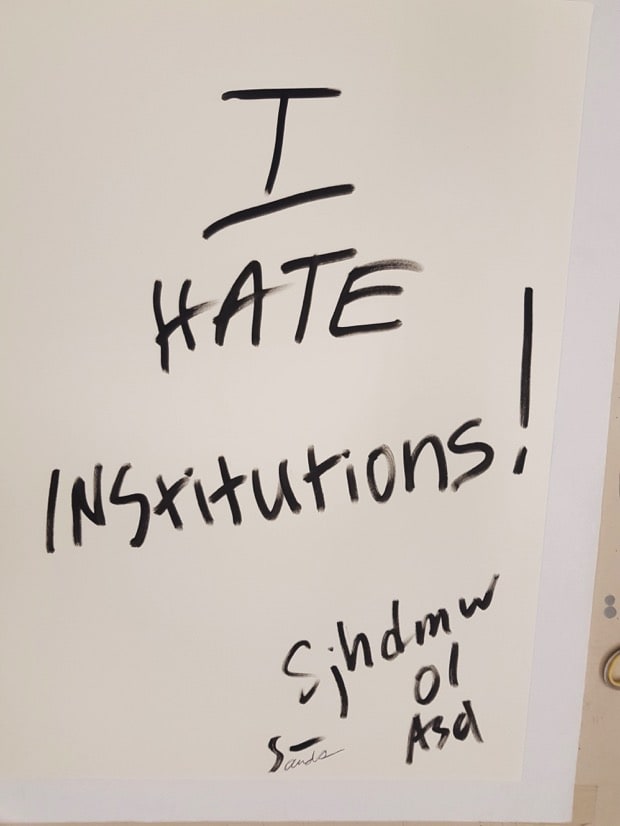
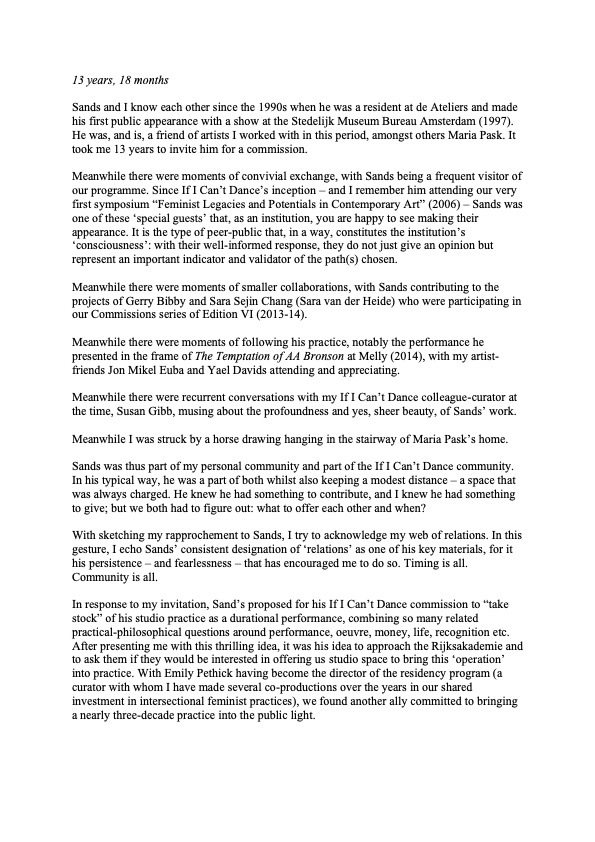
Fierce Feminist Demand
Gift Science Archive is a fierce feminist demand to centre the messiness of feelings and thoughts and sharing in our processes of meaning production, knowledge transmission and history-making. Perhaps nowhere are such epistemological practices more felt as in ‘the archive’, a highly contested locus of social, cultural, economic and political power. From Jacques Derrida’s Archive Fever to Saidiya Hartman’s Wayward Lives, the body of literature on archives and archival practices spans decades, disciplines and stakeholders. Often the colonial violence of the archive, with its staggering gaps and wilful omissions, feels too much to bear, that no amount of unlearning or unknowing will suffice. Facing such a ‘monumental’ structural condition, Sands’s and collaborators’ feminist demand with and through the Gift Science Archive has been to think and practice this relationship differently, through the small, the personal and the everyday.
Sands’s practice has long been a ‘performalist’ and relational one—since the very beginning in 1974, really, but also in 1980 (at age 6) when he posed for the newspaper article [02102-1993/1995/2019-S-UnlabelledDigitizedSlide155] covering the exhibition in which his artwork appeared at a local fair in Topeka, Kansas. Gleefully swinging his head and legs off the folding chair set up for him, in the 1980 image it is already clear that Sands’s ‘relational’ has always been ‘performalist’ self-presentation. This is to say, relational has always been about reciprocity, exchange (note his direct eye contact with the camera) and, even intuitively as a child, an insistent belief in the both/and. Gift Science Archive is, following Sands’s art/life practice, a constantly enfolding and unfolding archive and meta-archive of thoughts, feelings, figures, memories and objects. The constant processes of relational exchange, of assembly and re-assembly, of production and reproduction with which he is engaged form the principle strategies of gift-science-archiving, from its rituals of cataloguing, to the poetics of the data entry procedure. The demand is to hold space for an archival practice and, with it, a system of value and meaning-making marked by a commitment—as with any relationship—to reciprocity and mutual exchange.
For as much as I ‘enter’ an archive, it enters me. And the Gift Science Archive enters the body; it has entered the bodies of all who have built it thus far and, reciprocally, they have entered it. This process will, we hope, continue long into the future as the Gift Science Archive continues at pace with Sands’s practice and as the collective of people involved gets reconfigured again and again into the future. For us, this polyphonic structure and all that comes with it is a praxis-based reimagining of what ‘the archive’ can hold together, how it can move across bodies and where we understand value to reside in this deeply performative process.
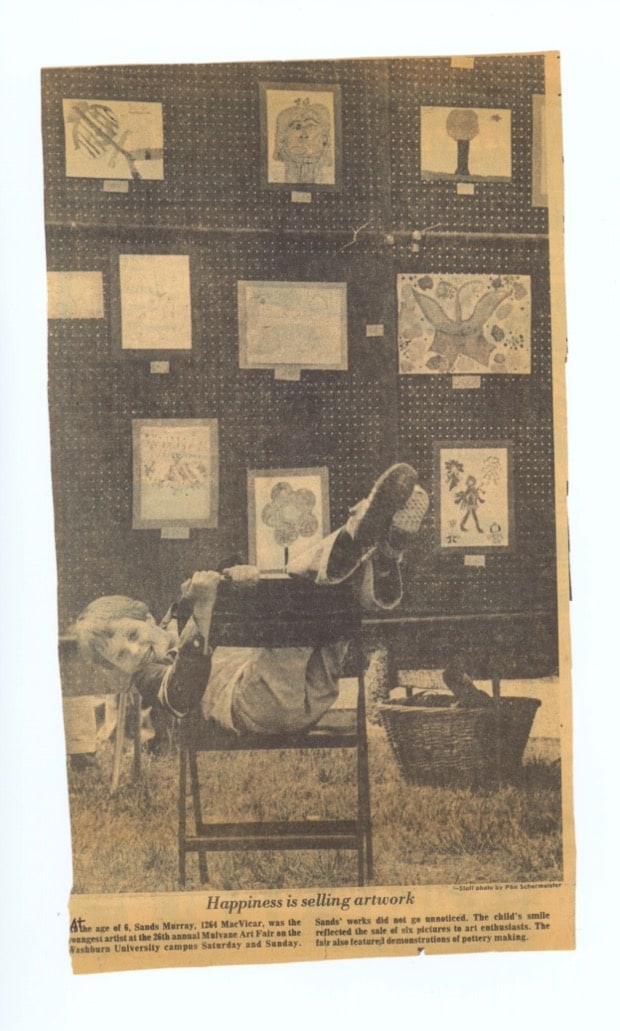
Accumulation, Thickness and ‘Studio Objects’
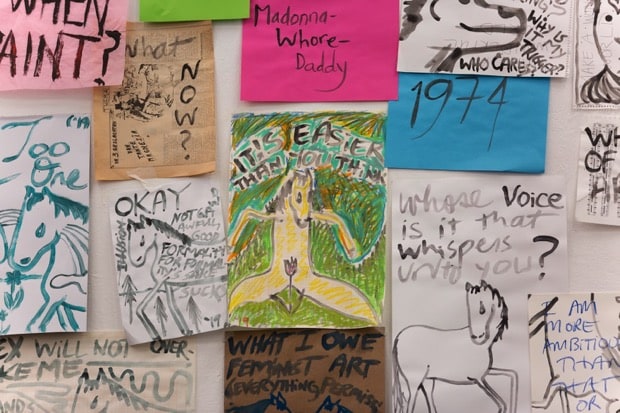
Behaviour, emotions, thoughts, feelings and relationships—as with Hannah. A performative trace of something that isn’t visible, but is very traceable. — SMW, 01459-2012-PsW2010s-WorkingSickalaHannah
Keywords and concepts in Sands’s feminist praxis emerged through the Gift Science Archive process and helped orient me towards his broader practice. From the beginning (even if we did not quite know it then), they have been the organising principles in our performance of archiving. If Gift Science Archive commenced with the intention to take stock of the artist’s oeuvre (as he described it), then what it became was a collective effort in navigating just what ‘taking stock’ might mean, practically (in a catalogue), economically (value production) and relationally (another value production) for an art/life practice that consists of, as Sands has described, performative gestures that are not visible but are very traceable.
At the end of November 2019, I moved to Amsterdam to begin a new position as a curator with the small but influential—and, to my mind, legendary, if not also elusive—arts organisation If I Can’t Dance, I Don’t Want To Be Part Of Your Revolution. I was entering one year into a two-year cycle (although Edition VIII – Ritual and Display would be extended one year due to the pandemic, giving Sands’s project another year to grow and transform in the Rijksakademie where his guest residency was also generously extended). One of the three commissions I was ‘assigned’ upon my arrival was Sands’s. I had not yet known the title was Gift Science Archive—up to that point this had only appeared in the contract—and I loved it, I loved the project of an archive performance and a performance of archiving. It was practical and deeply conceptual, and I was excited and curious. I know now that Sands often uses the metaphor of a snake eating its own tail to describe the temporal loops and spirals in his practice. I could see this action in the description of his work given to me during my interview process and, later (though still before I took up my curatorial post), in his October 2019 introductory performance lecture [01562-2019-DoP-UpToAndIncludingHisLimits09] where he mixed elements from his earliest works (slide show) to his ongoing Monument to Depression[00629-2004ongoing-S-MonumentToDepression-02] (here a pre-COVID perfume sampling session—01560-2019-DoP-UpToAndIncludingHisLimits07) and introduced us to his citational practice through a live performance duet [01564-2019-DoP-UpToAndIncludingHisLimits11] with Carolee Schneemann’s Up To and Including Her Limits (1973 – 76), from which his presentation took its name.

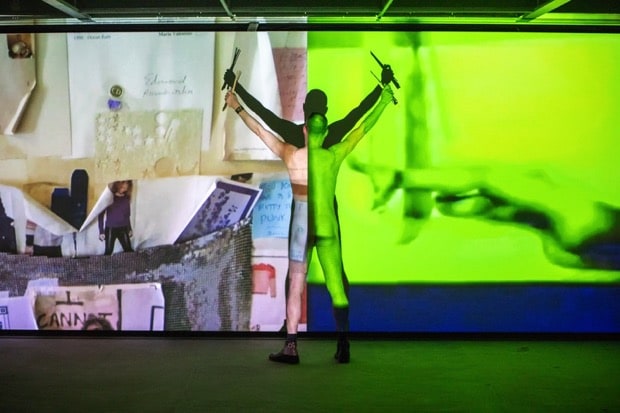
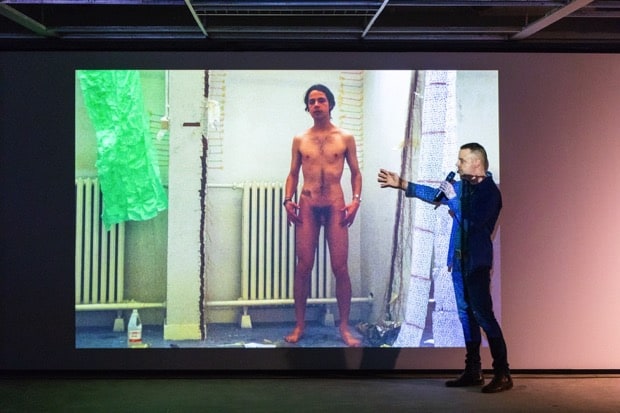
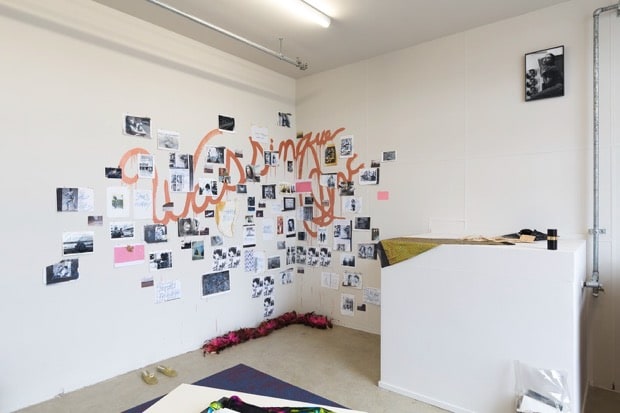
These strategies of accumulation—gathering herstories, objects, images and ephemera from sequined journals and luscious (and rather cheap) textiles to DVF wrap dresses and rare scents—and of constant assembling and re-assembling of materials, memories and meaning is at the centre of Sands’s art/life practice. There is a relentless self-reflective gesture happening: the live performance duet mentioned above juxtaposed his clothed body c.2019 with a photograph of his naked body c.1993, as well as his naked body c.2019 with historical footage of Schneemann’s performance practice c.1976. Sands has been activating his archive (and, reciprocally, auto-archiving) for over two decades and Gift Science Archive emerges out of this ongoing practice. It is about paying homage to those that came before [01462-2015-PsW2010s-IAmLikeTheseWomen], with ‘those’ being both others, like Schneemann, but also other selves, like the self that Sands was in the early 1990s [01584-2021-DoE-InGoodCompany15] or even the self that Sands was yesterday.
Though my language might seem to be slipping into a discussion of identity and identification, I propose setting aside psychoanalytic frameworks and poststructuralist approaches to ‘body art’ as meaningful modes to read Sands’s practice. Such methods lose sight of the structural and historical propositions—and provocations—that make his art/life practice so powerful. Issues of identity [00279-2001-PsW2000-gaystructure], of identification and belonging, and of representation and deferral, run through his work, it’s true. But such thematics emerge, to my mind, from an acute attention to his own positionality [02189-1995/1998-TwLd-WhereIComeFrom] within sets of structural conditions and the ways such conditions flow through his body. This situation being within and, at the same time, flowing through weighs heavy on Sands (and in Sands) as he continually searches for ways to relate in and to the world; and which he approaches through his strategies of accumulation, assembly and re-assembly. Sands often explains to people that though the work may seem like it’s ‘all about him’, it’s not. And I would agree. Sands, like all of us, is a compendium of structural and historical conditions that bridge the public and private. It is the relational force of their coming together (the structural and historical, the public and private) that one sees play out across his magnanimous body of works. It is a critical identity politics that takes on the construction and reconstruction of self in the world (with ever new layers of signification accumulated) not as a crisis but as a welcome challenge to be met—that can only be met—with the relational force of living.
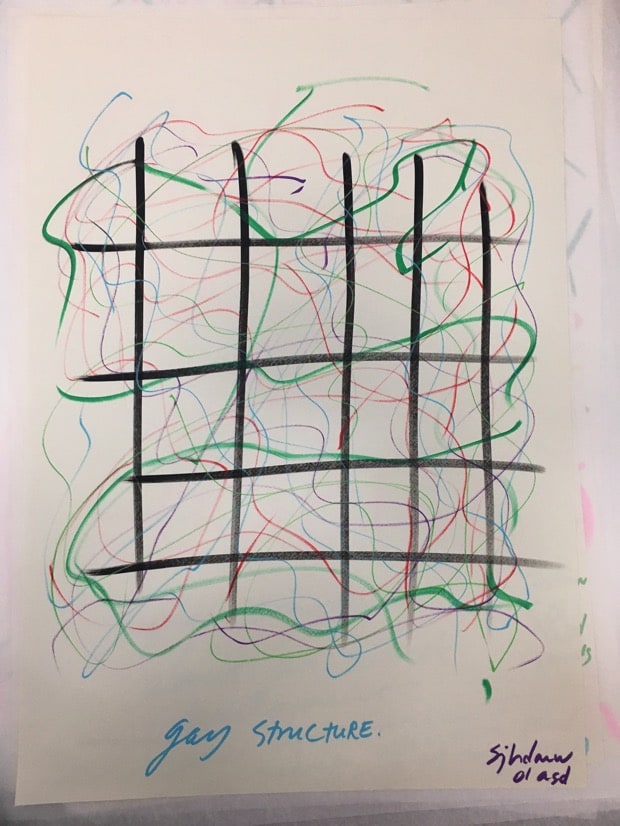
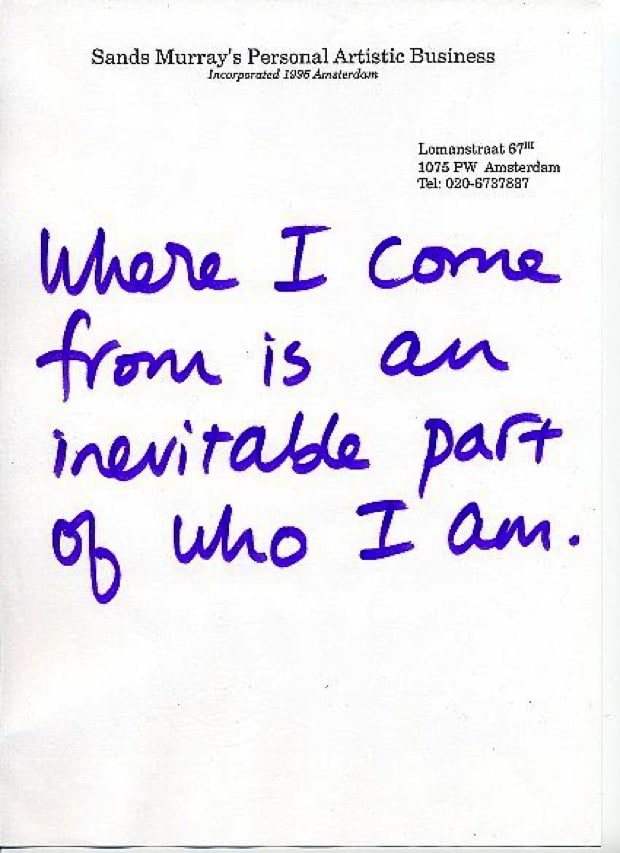
That I am compelled to always and insistently refer to his as an ‘art/life’ practice says something about this critical identity politics; and here I would like to transition into thinking about thickness. Sands is an artist who has made his art his life practice and, reciprocally, his life his art practice. The challenge of that old—and, by now, mostly empty—adage ‘the blurring of the boundary between art and life’ is alive and well here, and it is far from hollow in Sands’s ways of thinking. For him, this blurring is explicitly of those boundaries between production and reproduction—hence the devotion to strategies of accumulation, assembly and re-assembly; hence the regular—and equally explicit—appearance of ‘home life’ in his work. I could, of course, write at length about the ways that Sands’s prolific drawing and painting practice—his operations with ‘text as figuration’—work through, both compositionally on the page and in the embodied gestures of mark-making—his behaviour, emotions, thoughts, feelings and relationships. I could also write at length about how his ongoing performalist self-portraiture records the quite ordinary (though sometimes quite extraordinary) practices of his everyday domestic life, from acts of defecation [02214-c2015-TwA4-Home] an often returned to subject (alongside the anus) to intimate moments with Robin [00554-2009-PP-IntimacyAutonomyAfterJoanSemmel-007], Sands’s life partner since 1996, and their cats, Betsie [00549-2009-PP-IntimacyAutonomyAfterJoanSemmel-002] before and Duman now.
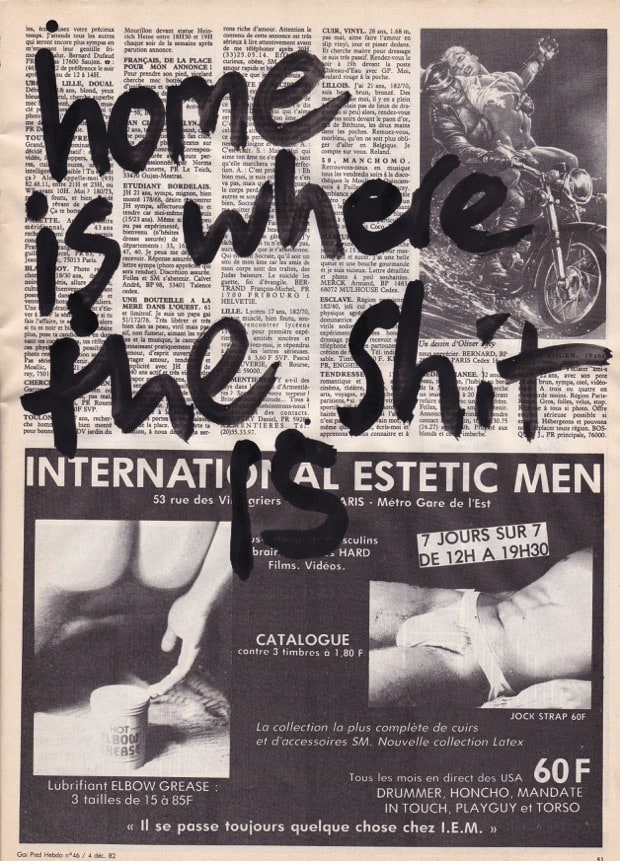
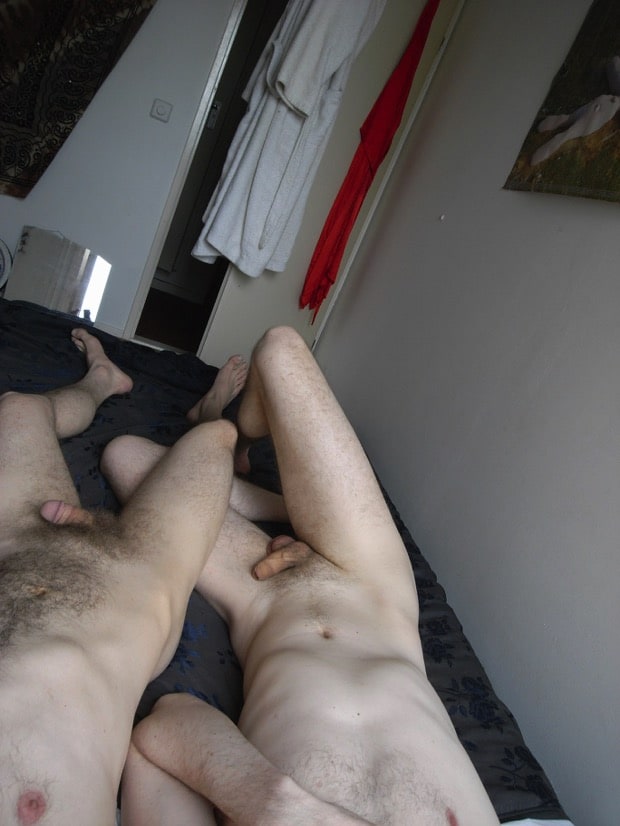

But I leave closer analysis of the groupings of work and typologies of working to the database and to the keyword constellation poems, which you first encounter when entering giftsciencearchive.net. For now, I come back to art/life. I have often heard the word ‘dense’ used to describe Sands’s practice, but this description seems to miss the messiness— the expanded, the exploded, the excess, the overspill, the ‘simply too much,’ the horsepower – that characterises his methods of working (as in ‘making art’) and of being in the world. Or, perhaps better put: his methods of working as being in the world. It is a both/and [00401-2000-PsW2000-DONTLOOK]. It is dialectical feeling. It always is with Sands; and, so, then, density, which conjures an image of compression (re: dense things are tightly compacted), does not really fit. Accumulation does not always mean density. What if we were, instead, to think about its thickness? In posing this question and this idea of ‘thickness’, I mean to invoke the work of pioneering feminist Donna J. Haraway. In the opening lines of her 2016 Staying with the Trouble: Making Kin in the Chthulucen, Haraway writes: ‘The task is to make kin in lines of inventive connection as a practice of learning to live and die well with each other in a thick present [, and] staying with the trouble does not require a relationship to times called the future. In fact, staying with the trouble requires learning to be truly present….’ In Haraway’s words, I see so much of Sands: this thickness is bodily. It is messy. It is inventive—often, for Haraway, interspecies [00166-2009-PSP-BigPumpkinSeries-065]—connections. Horsepower. And I also see the words of Sands’s mentor and long-time friend, Carolee Schneemann. As his teacher in the early 1990s in New York, Schneemann once encouraged Sands to ‘go toward the discomfort’—to stay, in other words, with the trouble. To stay in thick of it, of, that is, the relation force of living and of ‘learning to live and die well with each other.’ Schneemann’s words really form the foundation out of Sands’s ‘art/life’ practice. Learning to be ‘truly present’, to come back to Haraway, does start and stop when Sands is ‘making art’. It hasn’t started or stopped since at least 1993, and one could even argue as far back as 1980 with that pose for the camera at the Topeka fair art exhibition.
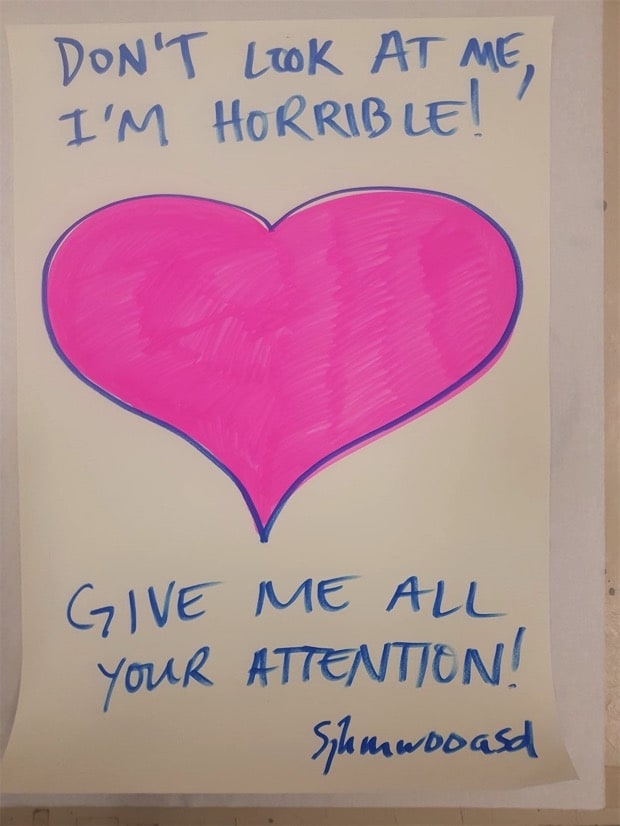
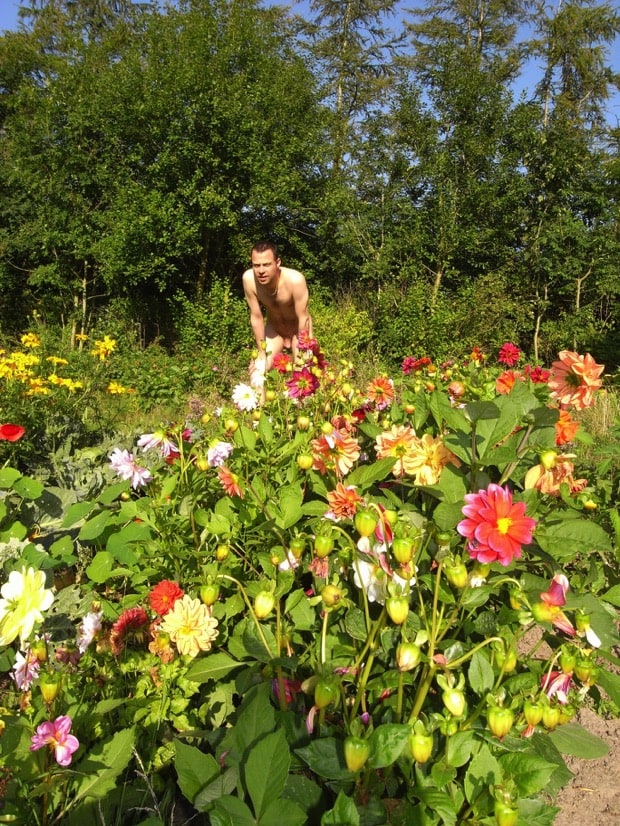
So, yes, thickness I think gets closer to describing the haptics of Sands’s strategies of accumulation. To be in ‘the thick and fibrous now’ is, to return to Sands’s words, not always visible, but very traceable. It is traceable in the stories and in the dialogic exchange that runs through the Gift Science Archive. Later in her 2016 manuscript, Haraway returns to describing the transmission of such thickness: ‘Good stories reach into rich pasts to sustain thick presents to keep the story going for those who come after.’ The stories—those things that hold us together in the relational force of living – are, as Haraway writes further down, like carrier bags [01669-2021-MaPi-MakingInGoodCompany03] and ‘a yoke for becoming- with, for staying with the trouble…’ It is in the stories, then, that for Haraway a ‘thick present’ lives and moves out into pasts and futures. Sands has a lot of stories: for nearly every object he has accumulated, assembled and re-assembled. It is ‘the storied tissues of the thickly present’ that Gift Science Archive traces, though doesn’t necessarily (and can’t, really) make visible across the catalogue of objects that constitute it.

With this question of the objects themselves, I come to the ‘studio object’, which is a term coined by the Gift Science Archive group to identify entries in the database catalogue. At the start of our conversations, I shared my experiences of conducting research at institutions, which often make stark distinctions between ‘the collection’ where the art objects reside and ‘the archive’ where the non-art materials are kept. Such a distinction – and, indeed, hierarchy—of materials simply would not do; distinctions and hierarchies, in general, have no place in Sands’s art/life practice and, by extension, in Gift Science Archive. For us, this notion of the ‘studio object’ afforded space to account for the mixture of art[01866-2021-DoP-InGoodCompany(visitor-engagement)09] and non-art objects [01860-2021-DoP-InGoodCompany(visitor-engagement)03] that constitutes Sands’s archive. This fusion of the ‘high’ and ‘low’ is a material extension of his ‘art/life’. In both there is an adamant adherence to horizontal ways of thinking that figures throughout the work, from the text as figuration [00427-2001-PsW2000-ATTENTION], to the relational happenings [00627-2013-DoP-MonumentToDepression-04] and workshop environments [00719-2010-DoP-MindBodyLandscape-039], to the performalist self-portraiture actions with others [00576-2009-PSP-TryoutMasculinityVenusEnvyShots-009]. Across these frames and forms—whether one is going to call it ‘art’ or not—there is a palpable vulnerability, honesty and mutual recognition that is almost awkward to encounter. This awkwardness is also messy. It is part of the ‘storied tissues’ of the thickness, just as are the layers of assembly and re-assembly that accumulate. This is Sands’s practice of horizontality, and it is where the gift-science-archiving of studio objects—as a linguistic and gestural act—begins.
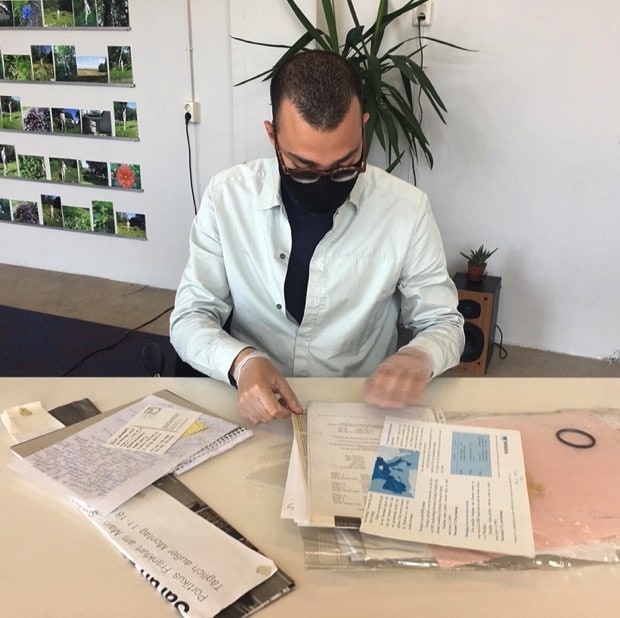
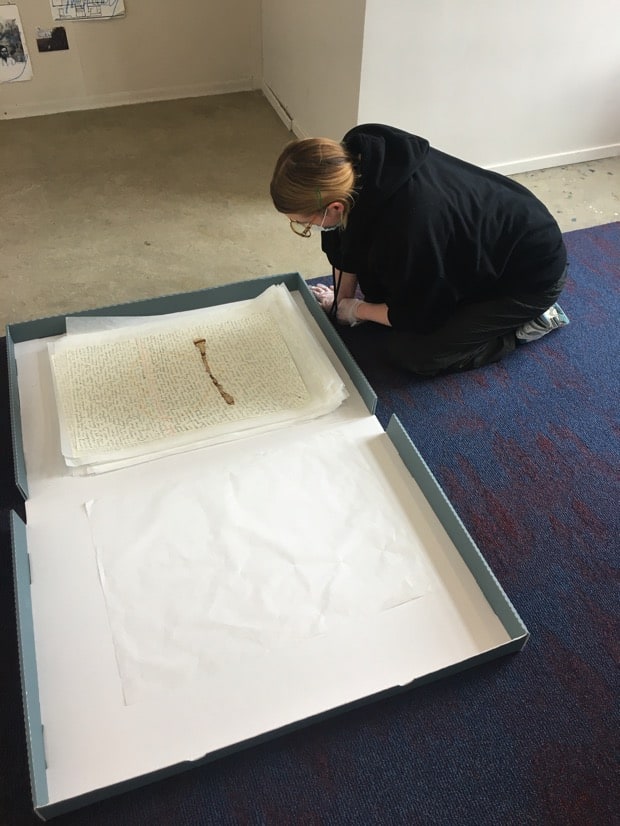
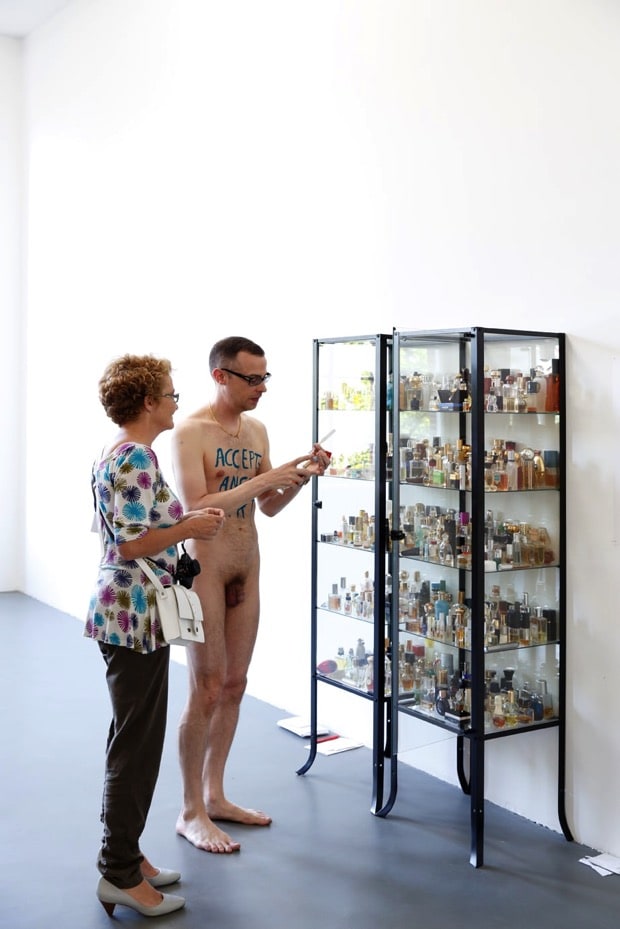
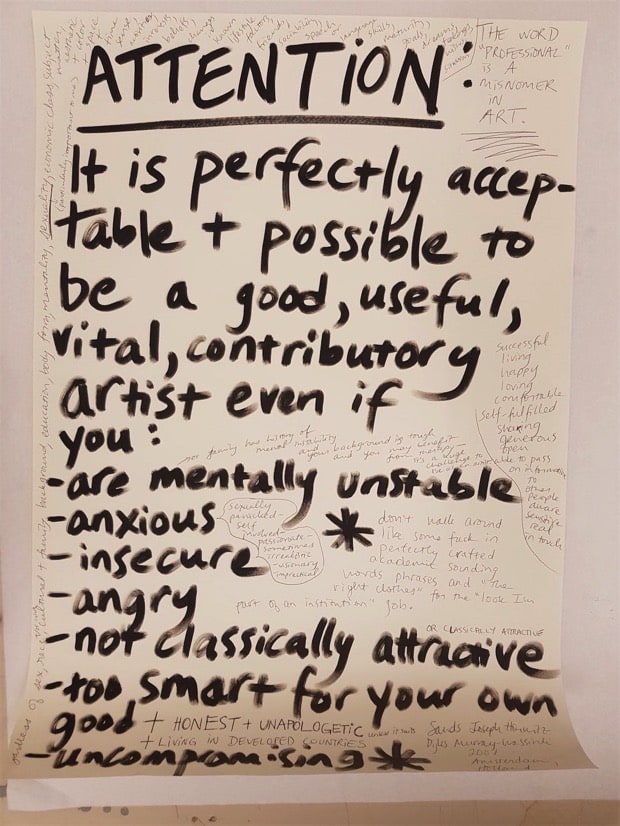
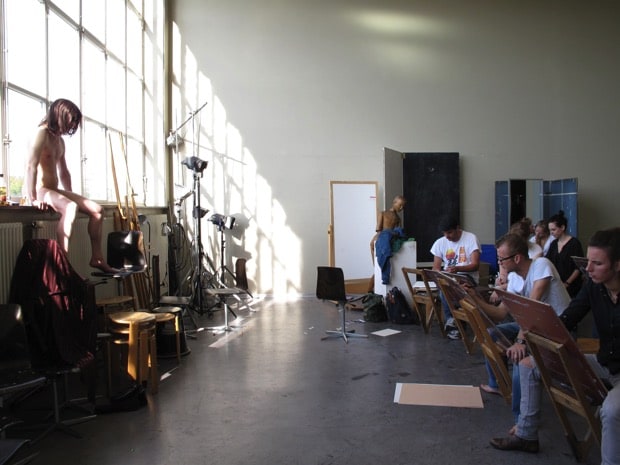
Domesticity and the Reproductive Labour of Archiving
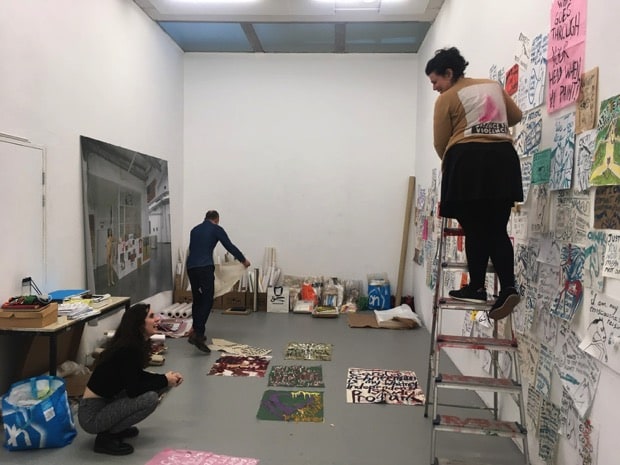
The start of the horse cloud. You have to start somewhere. It looks like there is no ‘system’ or ‘strategy’ for hanging this work, but in a way there is: it is a relational one, we figure the structure out by doing. — RR, 01371-2020-MaPi-HangingTime-025
[T]he archive is a cacophony of voices—highlighted through [our] collective archiving performance? Temporality is meaningful by asking and rephrasing questions. — AC, 01267-2019-MaPi-FirstMeeting-007
[O]ur archiving is sharing, it’s like opening up a heart. — SMW, 00421-2001-TwHd-YOUFOOLS
Since sometime in 2020 Sands and I speak quite regularly about the labour of life management [00456-2020-DN-ItsAllAboutPeople]—the taking care of medical appointments and tax declarations, of phone calls with families in other time zones, of calls to companies with long hold times, of online returns and of grocery shopping, of studio visits and outreach emails, of Zoom follow-ups and WhatsApp check-ins, of getting to the frame shop in a snowstorm, of getting to other countries in a global pandemic. The list goes on and on with its entries of bigger and smaller consequence, and their proximities to ‘the personal’ or ‘the public’ closer and more distant. Regardless of these differences, all these tasks find themselves needing to be done sometime and somewhere in the daily practice of living. For Sands, this is also where his daily practice of art making happens. It is all, as I discussed in the previous section, in the ‘thick and fibrous present’. And it is the performances—bigger and smaller; closer and further from ‘the personal’ or ‘the public’ proper—involved in his daily practices that Sands registers through his writing and painting practices, and that he folds into the frame of his ‘performance art’ practice. Gift Science Archive has, in this sense, been a ‘monumental’ enfolding of the whole process into the frame of the performance, hence the project’s durationality and its multifaceted public presentation framework. It has, moreover, been a process of enfolding the archiving process that—as Radna (‘RR’) suggests – we have figured out by doing; that—as Amalia (‘AC’) suggests—is only meaningful in its temporality; that—as Sands (‘SMW’) suggests—has been a journey of opening up our hearts.
These are the three tenets of the Gift Science Archive praxis: learning by doing together, leaving ourselves time to ask and re-ask, and opening up our hearts. They open onto fundamental elements of our positions in the collaborative labour involved in building an archive. In ‘Process Event #3: COLLABORATION. How to work together?’ [01857-2021-DoP-ProcessEvent#3COLLABORATION07] Sands, Amalia, Radna and myself talked through our process, and I would invite you to give that a listen, as I cannot reproduce here the warmth and respect—our quite domestic relationships with one another. Our moments together are the spiritual core of what Gift Science Archive is as a durational performance. Nearly two years of drinking tea [01401-2020-MaPi-HorseCloud-005], sharing life stories and gathering (virtually or physically) for ‘old-school feminist check-ins’ to hold space for everyone’s lives amid a pandemic—the trust born of these practices is not something that I can put in words. Here I sketch what each of us did and how our work towards the feminist demand of Gift Science Archive came together in various configurations between December 2019 and June 2021.
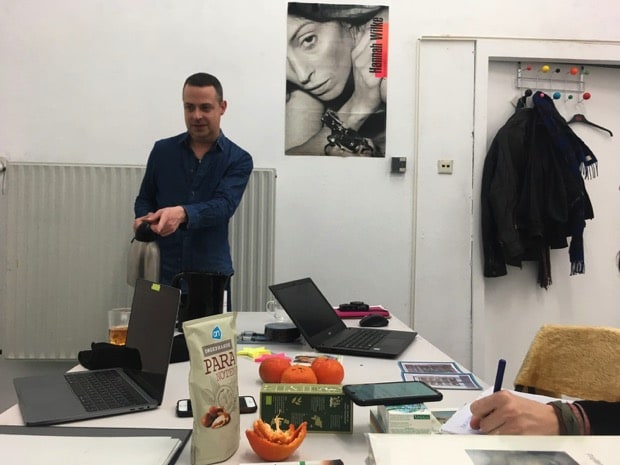
When I met Sands, I knew this relationship could work. Sands and I both come from the United States, a fact we see as an unfortunate truth rather than a prized starting point. We immediately sensed this in one another, and not a day has gone by since that our conversations haven’t made me smile. In some of my darkest moments during the lockdown in Spring 2020, Sands’s ‘sensitive listening’, practical support and positive energy helped to keep me going. I also, at the very start of this journey, met Radna and, a little later, Amalia. I have incredibly fond memories with them as well, from a lovely dinner with Radna getting to know one another’s personal life herstories in the back kitchen of a monastery in Ghent, to a conversation in Vondelpark [01479-2020-UbR-VondelbunkerGoesToTheGiftScienceArchive] with Amalia about ‘punk’ politics and the different worlds of art and culture that live side-by-side in a city. The honouring of these moments and the horizontality born of our mutual respect—not of the often-seen-in-the-arts rhetoric of care—which guides all our interactions, is what makes the project a ‘performing differently’ of the archiving process. We are not just cataloguing objects about or within feminist legacies. We are putting those lessons into practice as we do it—learning by doing together, as Radna has said.
It is, in fact, Radna who has throughout the Gift Science Archive process been responsible for recording the mostly invisible mechanisms in our work together: meetings, building our meeting space and database, in-process reflections on just what it is we—and especially Sands—understand ourselves to be doing. As our ‘meta-archivist’ (a title that I rather intuitively coined in December 2019 to describe her role), Radna has produced an archive of process images [01413-2020-MaPi-ConversationSandsAndRobin-003] punctuated by passages from her process diary, as well as a series of meta-archive conversations [01870-2021-MaT-MetaArchiveTranscripts01] (later translated and transcribed by Martha Jager) tracking the webs of relations that have underpinned Sands’s art/life practice for decades, and those being built through the archiving period of the project and its exhibition moments [02342-2021-DoE-WithoutYouImNothing04]. At the close of her meta-archive in December 2020, she also initiated a meta-email thread [02391-2020-MaDN-MetaEmailThread], inviting Sands, Amalia and myself to reflect on our roles. Then, in February 2021 Radna took on a different role: as co-curator of our first public display of the archive. Together with her collaborator Huib Haye van der Werf (together they form mistral.amsterdam [http://mistral.amsterdam]) and myself, we created with Sands In Good Company [01574-2021-DoE-InGoodCompany05], an exhibition that turned the gallery space into an active research centre, inviting visitors to dig into the Gift Science Archive, and to join in our practice of learning by doing together. Over 10 weeks, Radna and I hosted something like 250 visitors in the archive, sharing with them stories Sands had shared with us and our own as well. This centring of the storytelling elements of knowledge transmission was our first activation of the archive and of the meta-archive that lives within it; giftsciencearchive.net we see as another such activation. The meta-archive lives within the archive. Time spirals. The snake eats its own tail again. In giftsciencearchive. net users will find these multiple threads of the meta-archive catalogued alongside other studio objects. They are among the paths that lead through the Gift Science Archive process of learning by doing together.
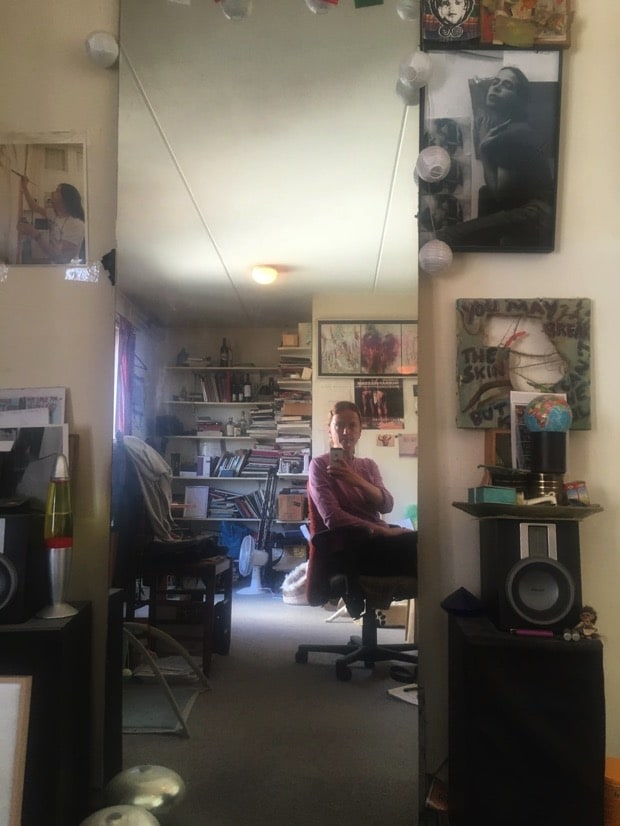
Another path would be through the work of Amalia Calderón, the project’s archiving assistant and artistic researcher, who worked together with Sands in weekly archiving sessions at the Rijksakademie from June 2020 through December 2020 (and, before that, via online correspondence from March through May 2020). For three hours each week [01422-2020-MaPi-ConversationAmaliaAndSands-007]they gathered for tea, stories and cataloguing. With my input, we procured archiving materials, and they set to the logistics of measuring, titling, photographing and labelling each studio object with a catalogue number. As they gathered data, they also shared stories and bore witness, together, to the relations—and memories of relations—held within each studio object. It was a ritual of reading the talismans. As Amalia described in a panel on practices of care [https://bit.ly/3FkVSnc] that she and I participated in, ‘If I think of it, I’m instantly thrown back to Doja Cat playlists, funny sex anecdotes about incompetent male partners, our roles as generational transmitters of feminist art practices, and an overall underlying homage to the heritage of womxn that touched our lives. Yes, we often talked about our mothers.’ Throughout this process, Amalia took it as her task to gather notes from what was said (there and in other meetings), and, from January through April 2021, to distribute these words and thoughts (totalling around 50 pages of text that had to be migrated) across the object entry reflection notes. There they wait to be found and re-found by users. It is, to come back to Amalia’s words, in their temporality, slow and spiralling, that these reflection notes and the talismans (or studio objects) they document become meaningful. The work that Amalia did together with Sands in the database and, alongside that, the work that she did with me to develop the architecture of the website—its filters, keywords and constellation poems—forms the core of the archive logic that lives in giftsciencearchive.net.
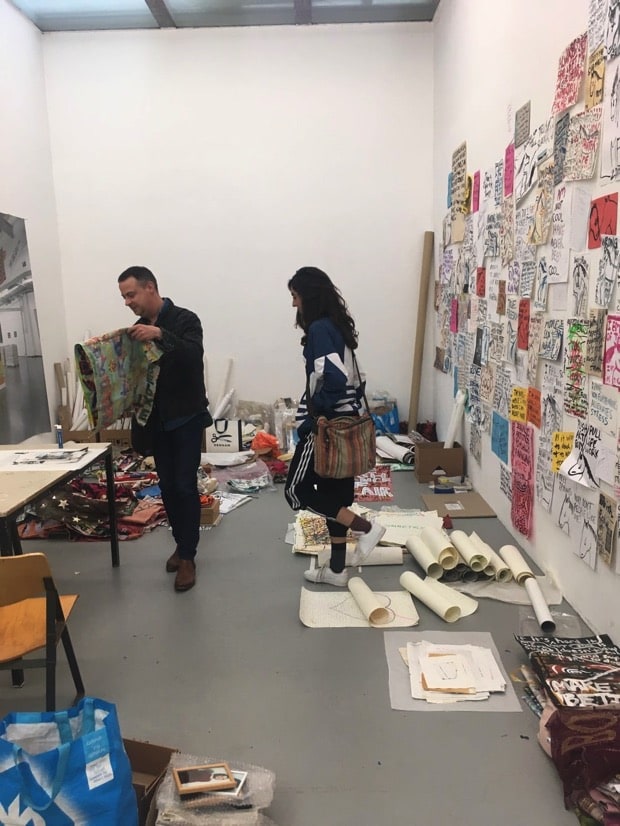
And now I come to my own role in this collaboration. For this I can offer no clear path. As Amalia expressed, “I have been the linking thread of the different Gift Science Archive limbs, and the headquarters and communicator to all of us”. It’s true. It was I that worked out a meta-archive roadmap with Radna, sat with Amalia as we created a cataloguing system and fine-tuned the database, and stayed always in touch with Sands, as a commission, a collaborator and a friend. I have kept an institutional eye on things, like budget and communications, but also scheduling meetings (including feminist check-ins) and setting timelines; I have facilitated dialogue about the architecture of the database and how to catalogue objects (myself cataloguing many objects along the way), as well as about selection of works for display presentations and event choreographies for the process events; and I have also, all the while, kept an overview of the networks of affective relations and task-based activities that constitute Gift Science Archive—when art and life are actually blurred, what constitutes ‘the performance’ is totally open. Sands likes it that way; and I have been here to practically make that possible, as well as to help conceptually refine the work happening in each of the project’s spheres.
But this checklist of duties seems to miss something of what my role has been. As Radna described in the meta-email thread: “The way Megan has approached this commission from the beginning as a curator is also quite special—I think it’s a bit of a miracle because I’m sure that many other curators would have acted very differently (thinking more in hierarchy, author/ownership) and I believe that when Amalia joined there was already a kind of working in place that made it clear that everyone who is part, is part, with space for your own practice/ideas as well”. It’s also true: I am against hierarchy. I value deeply the different forms and expressions of knowledge that every body carries—it is these knowledges that, I hope and trust, we have also archived along the way. In this sense, my work with the Gift Science Archive has been to infrastructurally ensure that the time and space is held open and available for each of our knowledges to live. In turn, I have learned just how to do this by opening up my heart and sharing as Sands has opened up and shared his archive, and by doing it together with Radna and Amalia. At the opening introductions for ‘Process Event #1: VALUE. What is Trash? What is trashy but valuable?’ [01486-2020-DoP-ProcessEvent#1VALUE06] in March 2020 Frédérique Bergholtz described Sands’s overpacked home studio space as cut through by ‘elephant paths’ or unofficial and anarchic routes made by doing. Such paths are messy and circuitous. They take time to see; but in them I have caught glimpses of a profound logic that pervades Sands’s art/life practice. And so, perhaps what I can offer to users of giftsciencearchive.net is not a path but a frame of mind, which honours the logic of those elephant paths and their unruly energy—which honours Sands’s horsepower.
